We're in the process of reviewing Apple's new 12-in MacBook (update: our review is now live), but let's see how it compares to another Broadwell Core M device, Lenovo's Yoga 3 Pro.
Device type
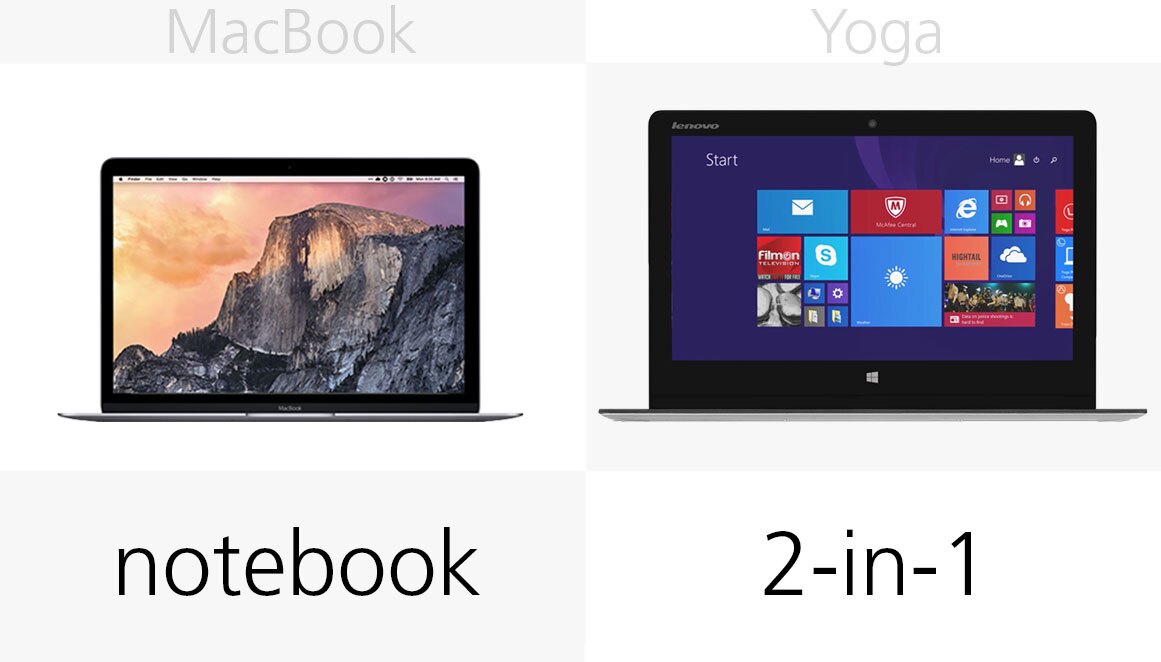
In case you aren't familiar with the Yoga lineup, it's a transforming 2-in-1. Only instead of having a keyboard that snaps off, like on the Surface, it has a hinge that rotates 360 degrees, allowing the keyboard to fold up behind the screen (tablet mode).
Lenovo also advertises several other modes, like "tent" (propped up for watching movies) and "stand" (propped-up the other way, with keyboard facing down), but the two modes that matter the most are laptop and tablet.
... and of course the MacBook is a traditional notebook – no touch or tablet features. Just a damn good trackpad and keyboard.
Size
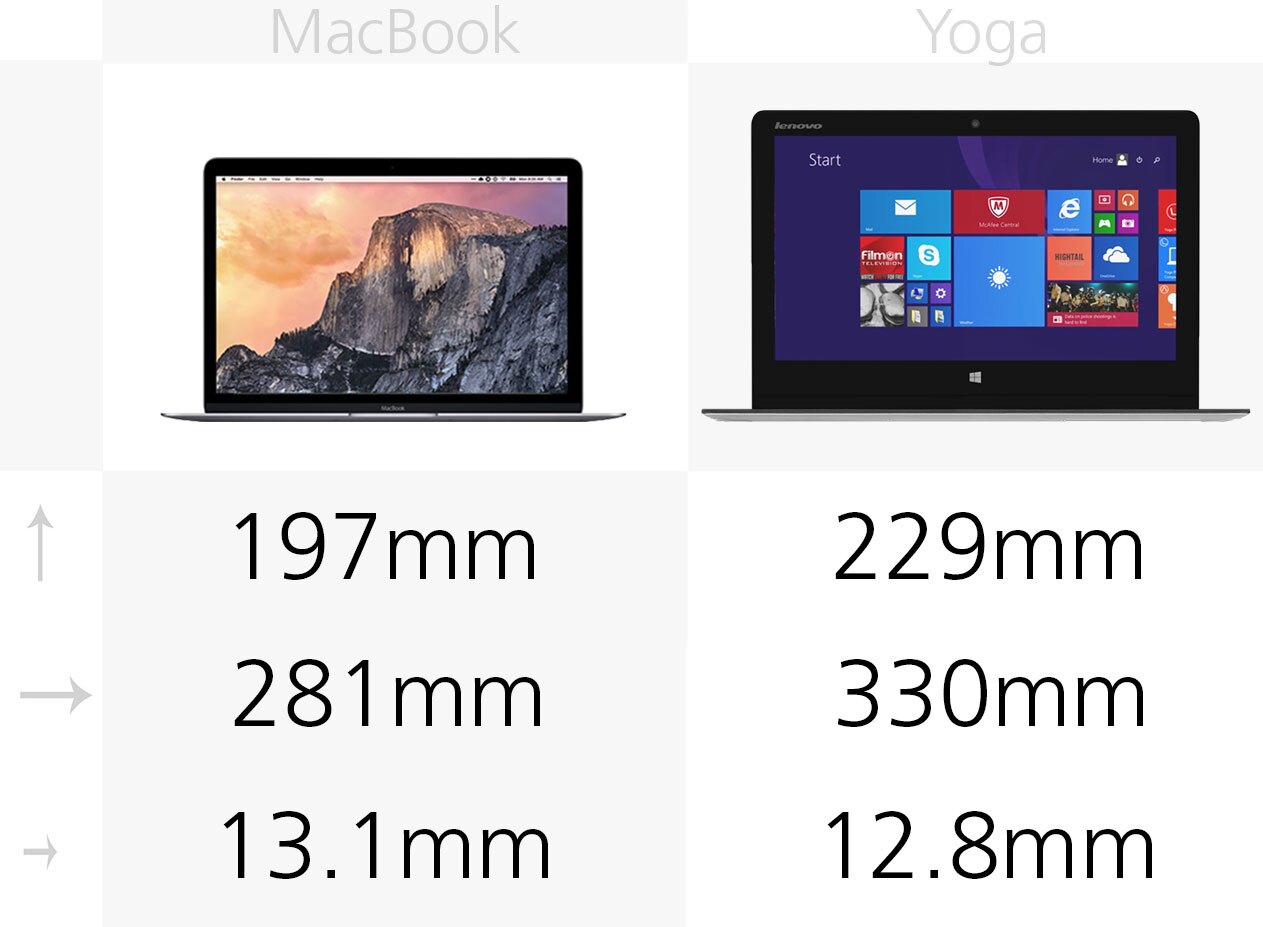
We're looking at two different size classes here, though both machines carry that trademark Core M thinness.
As far as specifics go, the Yoga is 16 percent taller, 17 percent wider and 3 percent thinner.
Weight
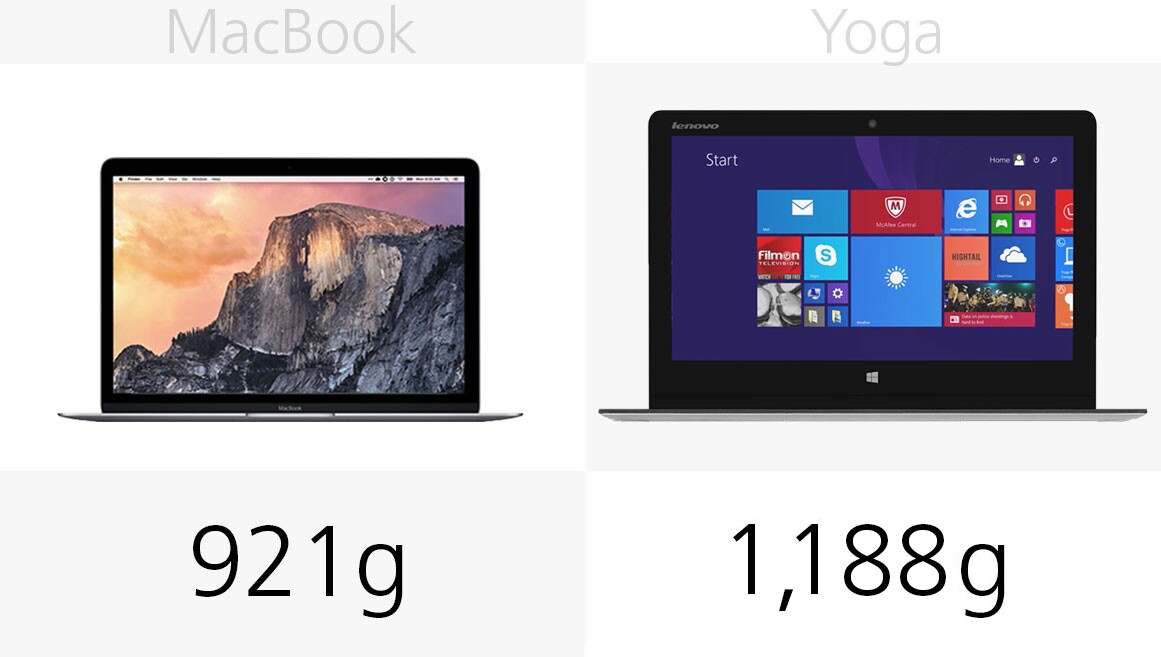
The Retina MacBook is 22 percent lighter than the Yoga 3 Pro, though once you factor in the Yoga's larger size, they're both going to feel very light in hand ... though "ridiculously light" is probably a better description.
Build
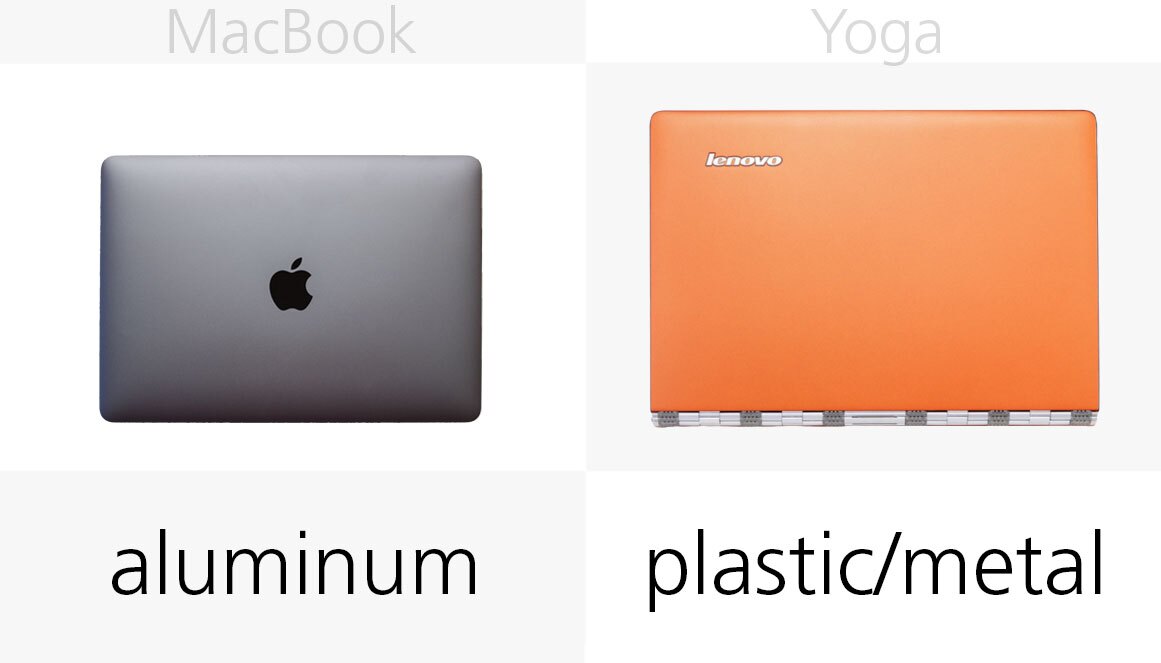
The Yoga has a nice construction, including its unique watch-like hinge (made of 813 individual pieces of aluminum and steel), but it also leans on plastic too much to really call it a premium design.
The new MacBook has an aluminum unibody build, a bit like a lighter and thinner version of the MacBook Air. It also has a more focused appearance than any other MacBook, with barely any space on the sides of its keyboard and relatively small bezels around its screen.
Trackpad
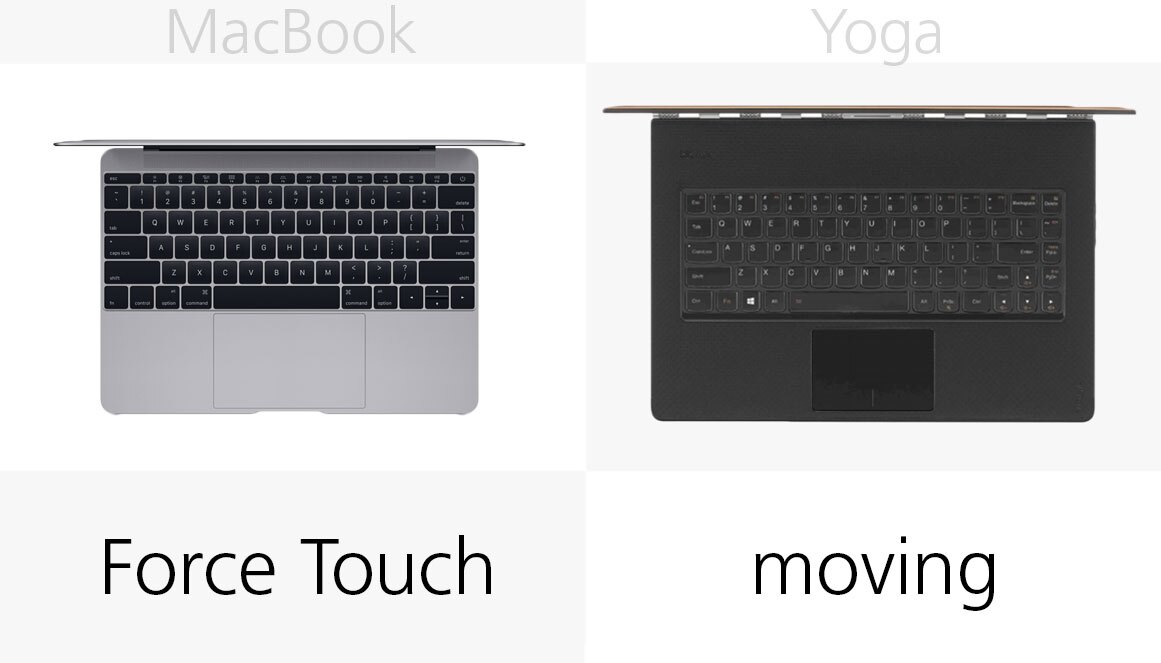
The Yoga 3 Pro has a fairly nice clickable trackpad, but you can see above how much smaller it is than the MacBook's large glass pad.
The 12-in MacBook uses Apple's new Force Touch tech, which makes the non-moving trackpad feel like it's moving (using a combination of sensors and haptic feedback). You can read our 2015 Retina MacBook Pro review (it has the same type of trackpad) for more on Force Touch.
Colors
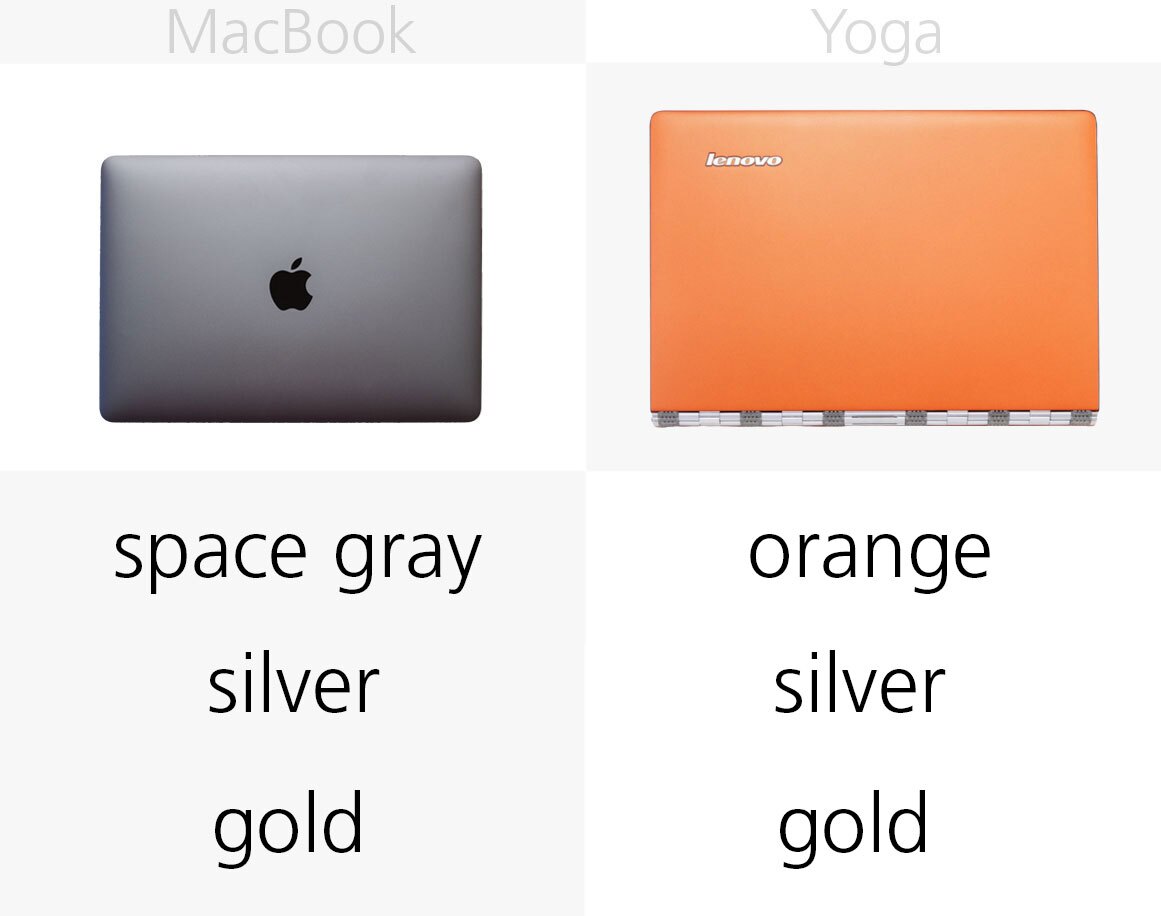
Each company is giving you three color options to choose from.
Display (size)

The Yoga's 13.3-in display is about 17 percent bigger than the MacBook's 12-in screen.
So far we're happy with the new MacBook's screen size: it's a little bigger than the 11-in MacBook Air's screen, while using a slightly boxier 16:10 ratio.
Display (resolution)
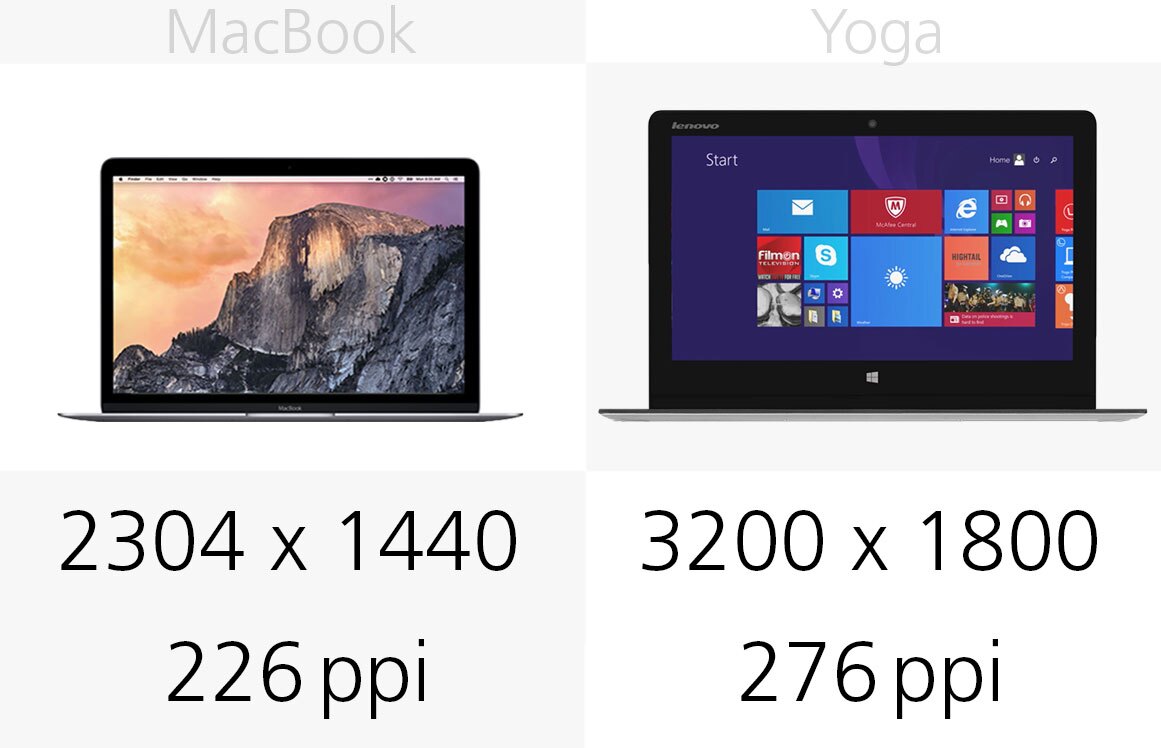
This looks like a big advantage for the Yoga, but remember that it needs to be sharper due to its double-duty as a tablet (tablets usually sit closer to your eyes than laptops). The MacBook's Retina Display looks every bit as good as the screens on the Retina MacBook Pro series.
Pen input

While Microsoft's Surface uses pen input, the Yoga doesn't (and, as a non-touch device, of course the new MacBook doesn't either).
Processor
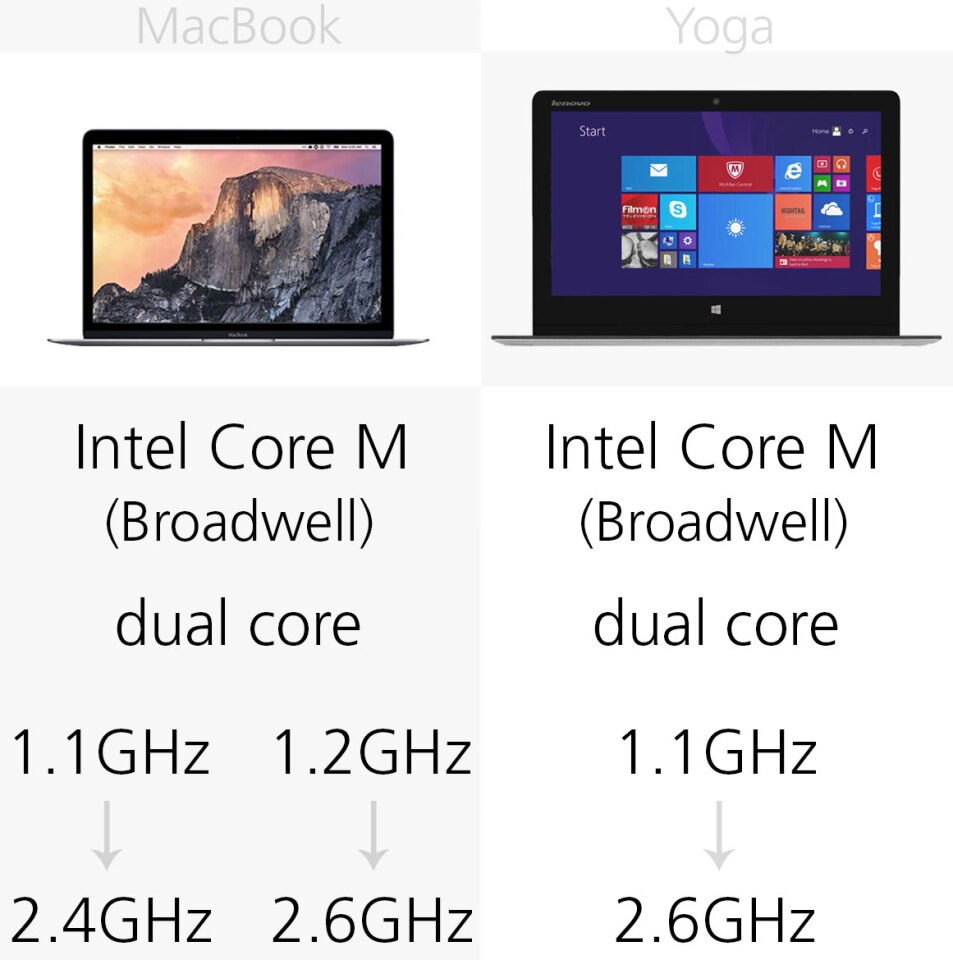
Neither machine is giving you cutting-edge performance, as Intel's Core M chips are more about opening the door to ultra-light/thin form factors (like these two) than they are about blazing speed.
Both machines will benchmark in the same ballpark as a 2011-12 era MacBook Air. In our experience, though, the new MacBook can handle an intensive app like Photoshop much better than we expected – really no hiccups or yellow flags at all.
Graphics
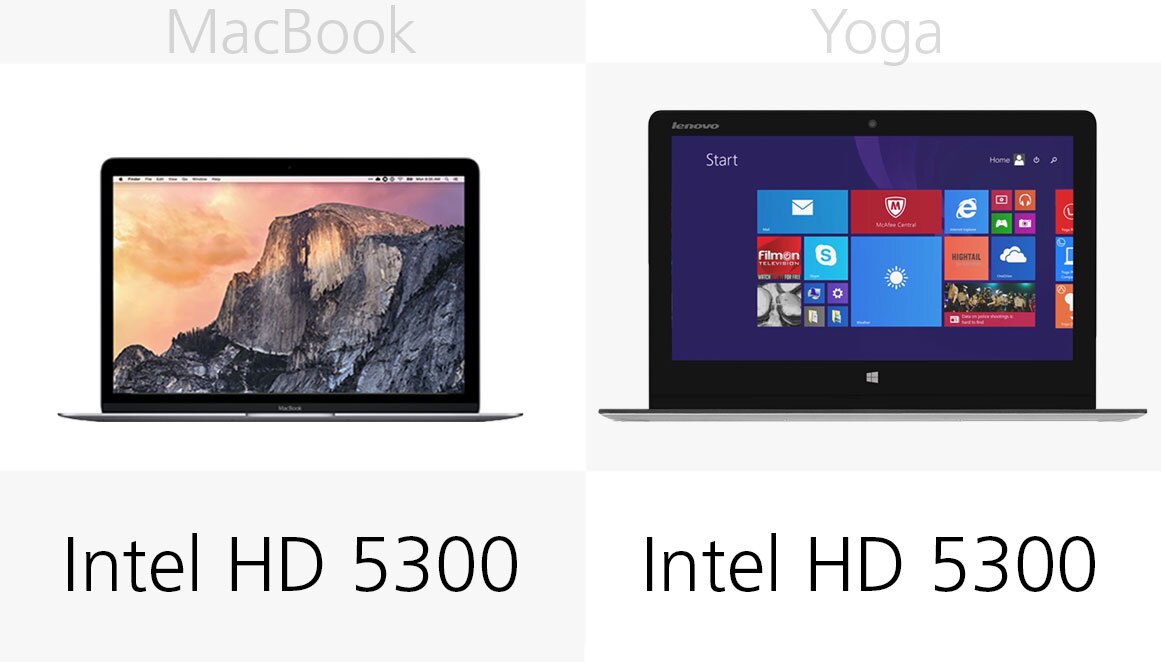
Both devices have the same Intel HD 5300 integrated graphics.
RAM
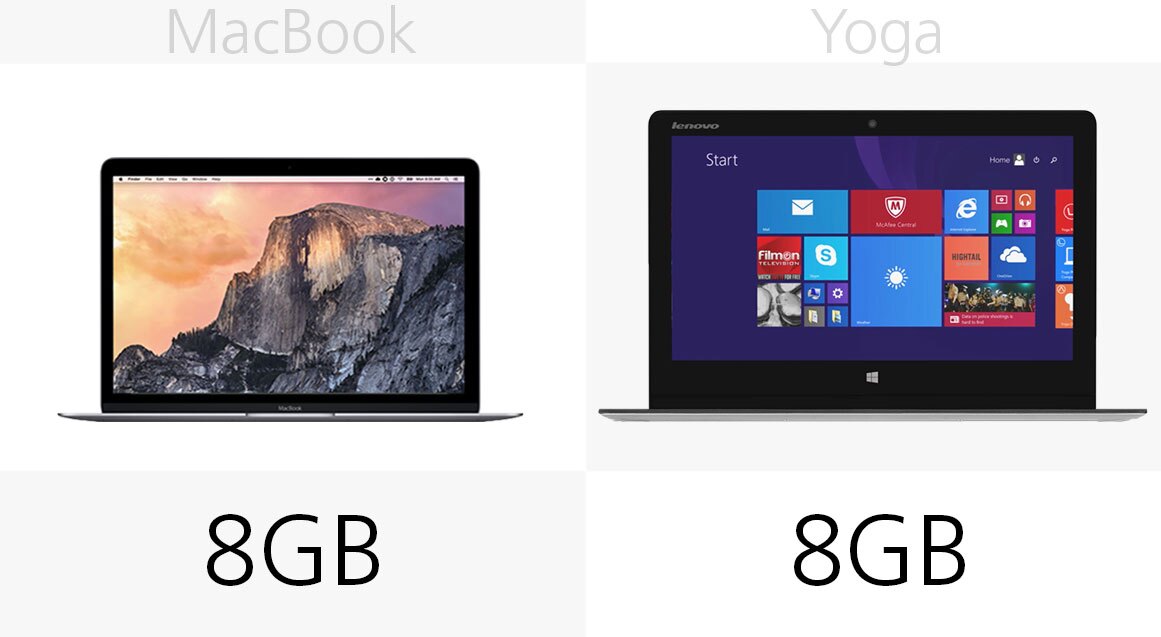
Both notebooks ship with an ample 8 GB of RAM.
Storage

We're also looking at the same two sizes of built-in SSDs: 256 GB and 512 GB.
SD
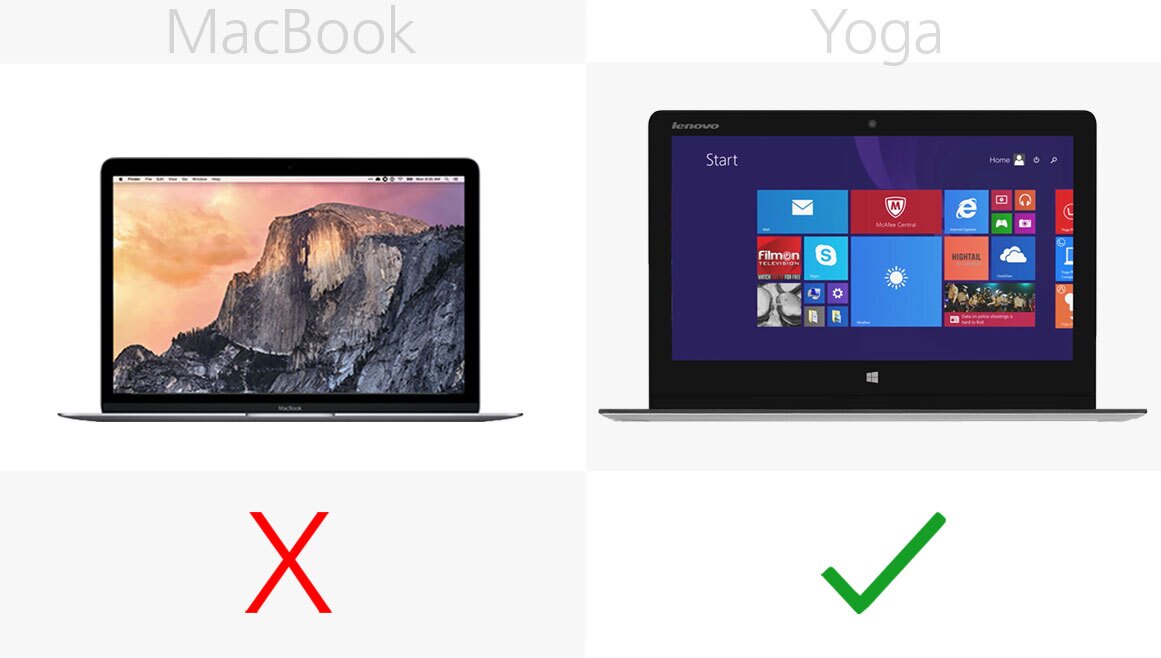
The Yoga 3 Pro has an SD media slot. The MacBook doesn't.
USB ports
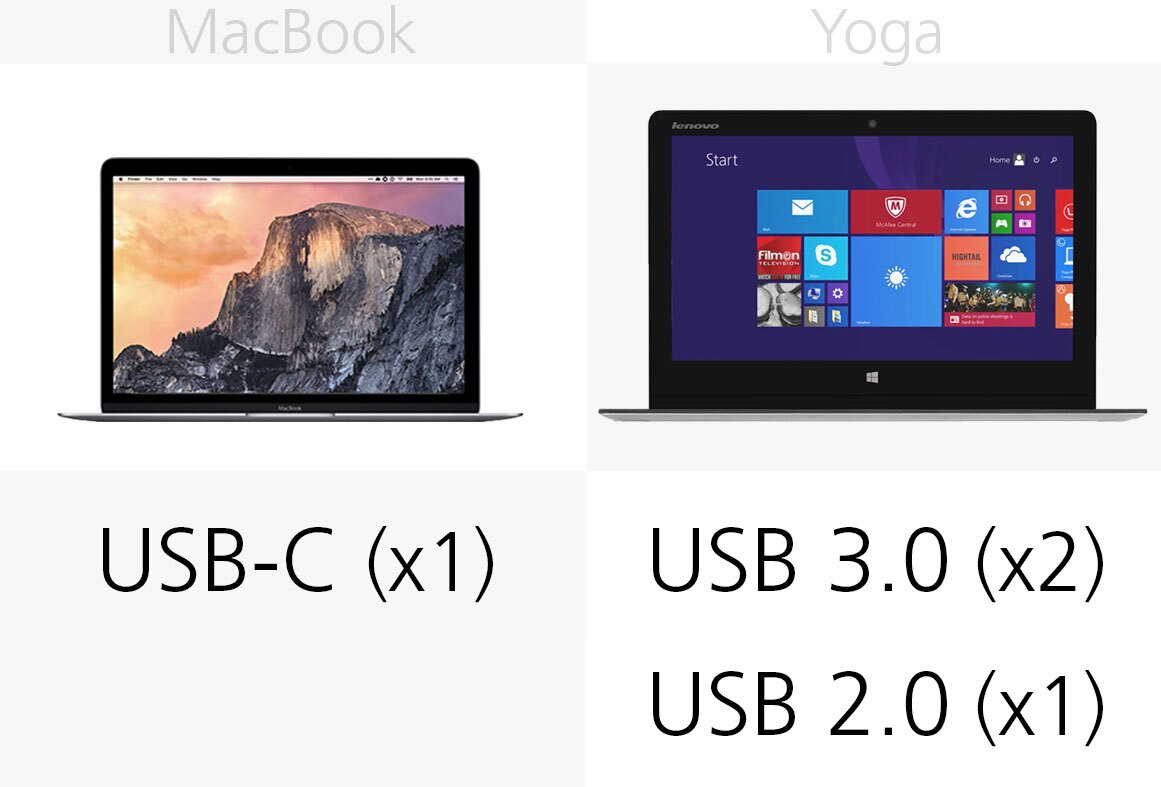
In fact the MacBook's USB Type C port is the only port on the entire device (well, apart from a headphone port). If you buy this device, know that you're putting your marbles in a future made up of USB-C and wireless accessories. Since most people don't have those accessories right now, you'll likely have to add an adapter or two to your purchase.
Standalone charging port
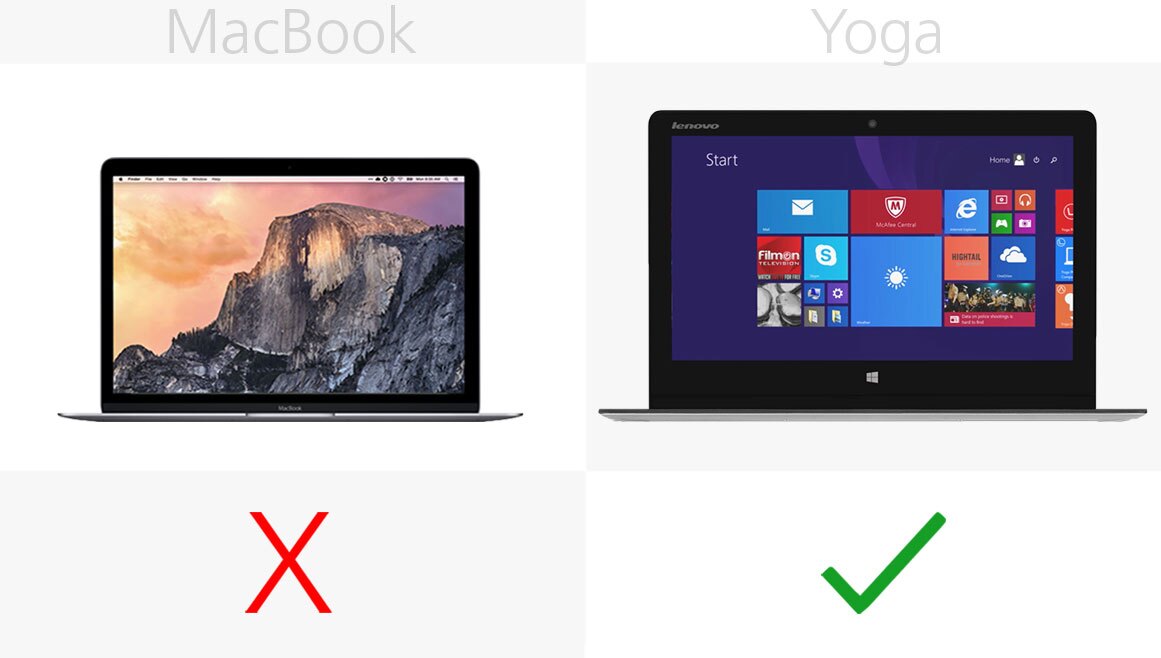
That also means that the MacBook's lone port does double duty for charging. Apple does sell a more advanced adapter that will let you charge and connect to a wired accessory at the same time, but that one will set you back US$80.
Video out (dedicated port)
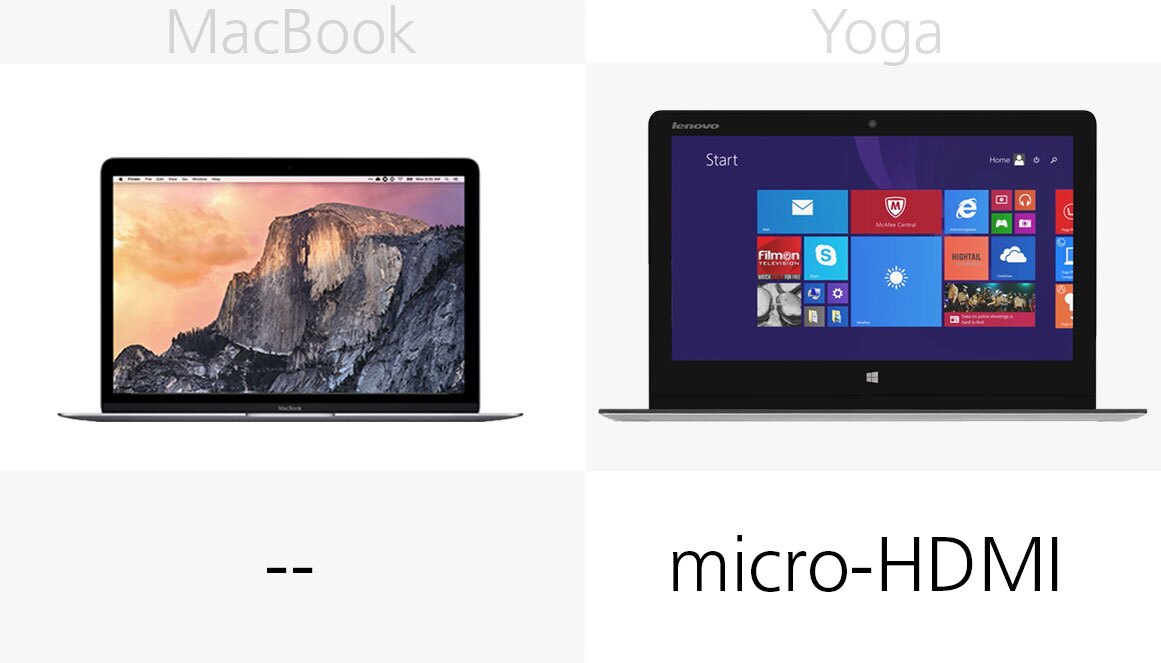
The MacBook's USB-C will, through the power of adapters, play nicely with HDMI and other display mirroring standards, but having one port also means there's no dedicated video out port.
Battery

These Core M machines have good battery life, but still a bit off the pace of more powerful Haswell or Broadwell Core i5/7 devices.
Webcam

Here's an odd place for Apple to skimp in the new MacBook: dropping from 720p to 480p resolution for its built-in webcam.
Software
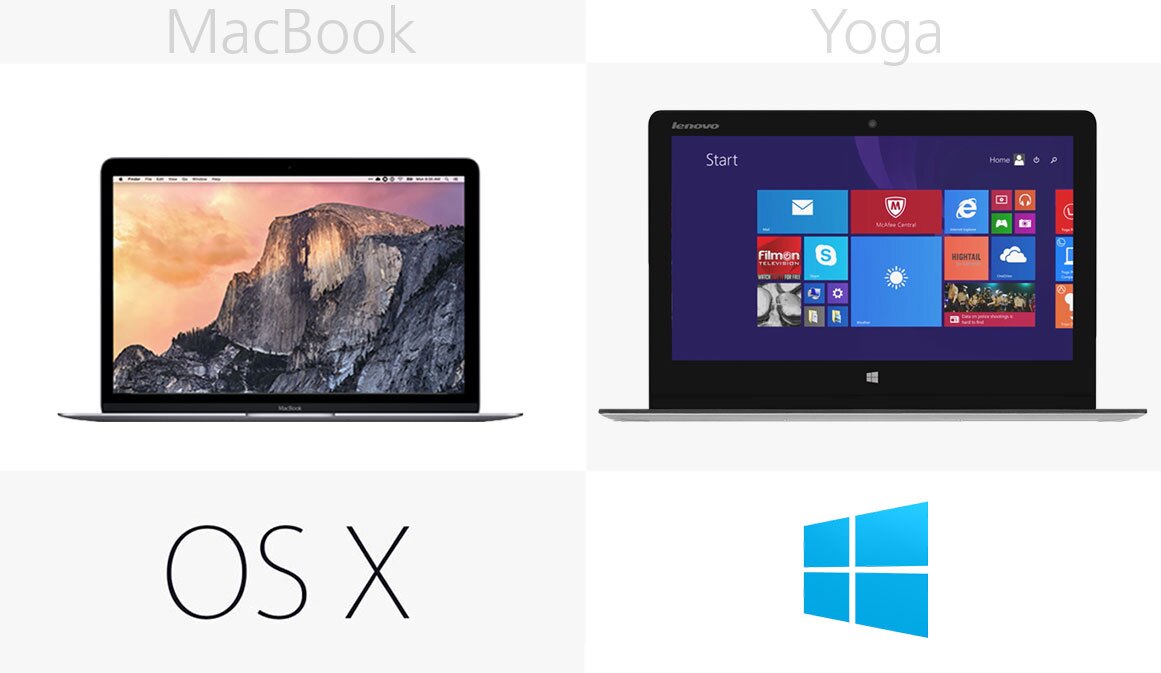
The new MacBook ships with OS X Yosemite, and the Yoga 3 Pro includes Windows 8.1 (though a more expensive version of the Yoga jumps up to Windows 8.1 Pro). The Yoga will get a free update to Windows 10 when it launches.
Release
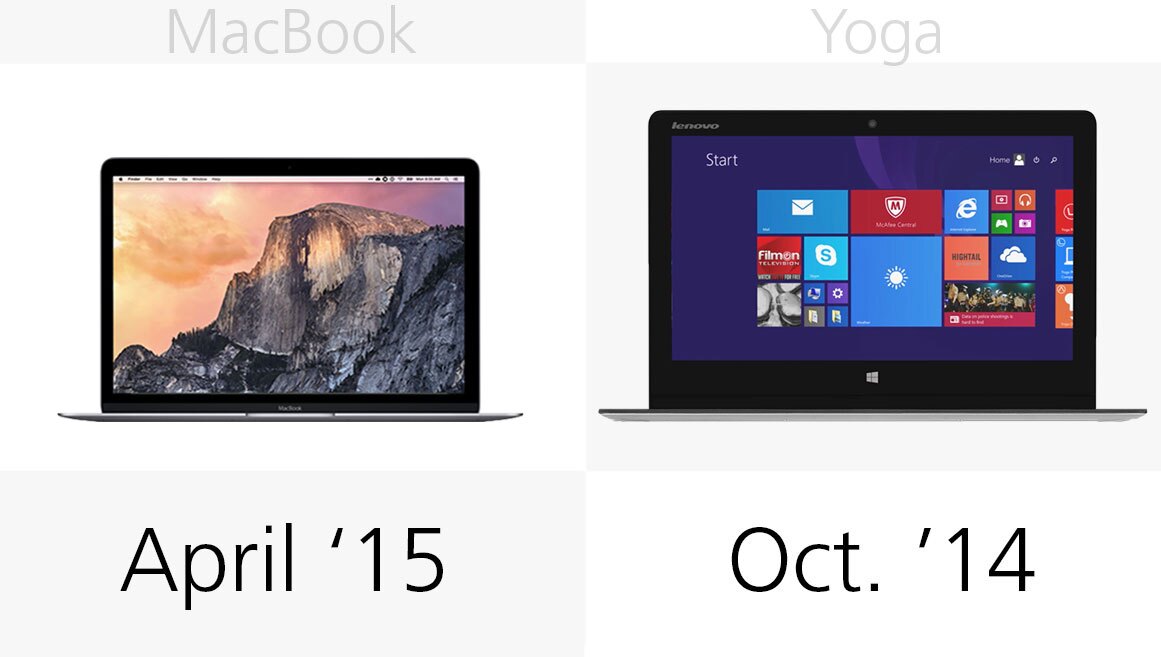
The Yoga 3 Pro beat its Core M rivals to the punch by several months, launching in late 2014. The new MacBook technically went on sale last week, but online orders are backordered and most Apple Stores aren't yet stocking them.
Starting price
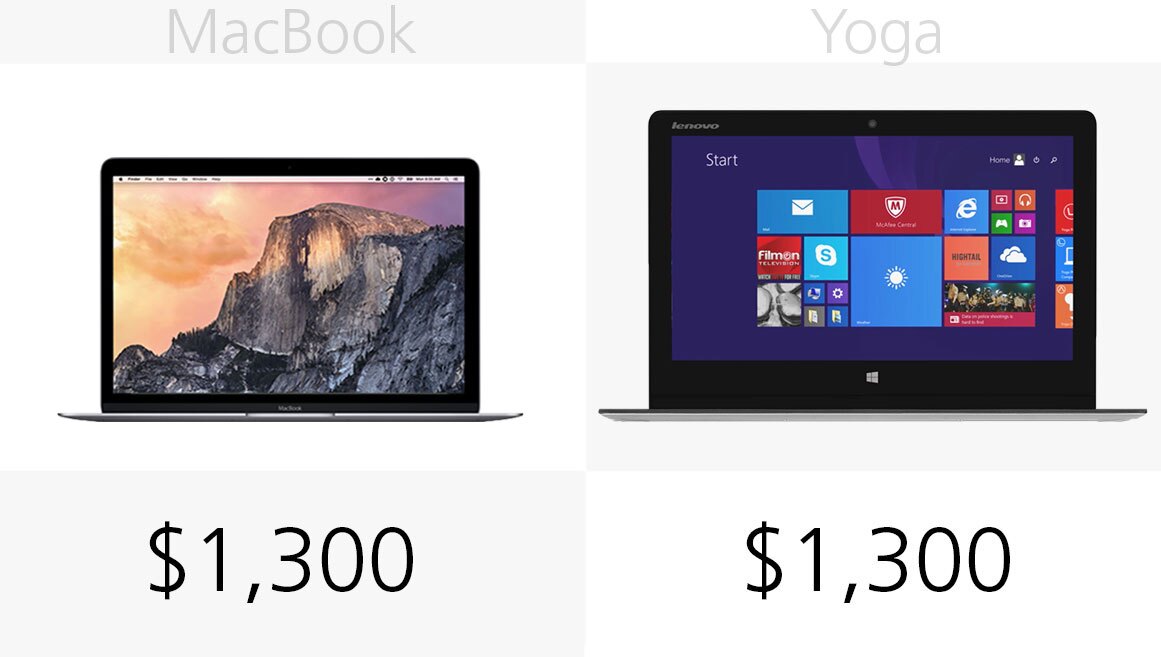
You may be able to find it for cheaper, but $1,300 is the most common starting price for the Yoga. That's the same price that you'll have to pay for a 256 GB 12-in MacBook.
For more, you can check out Gizmag's new MacBook review.


























